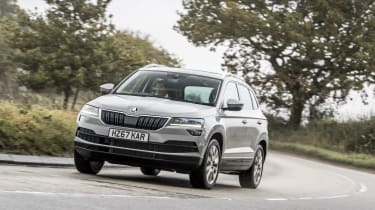Skoda Karoq review – fit for purpose - MPG and running costs
Skoda’s new small SUV is certainly capable, but lacks the character and spirit of its Yeti predecessor
MPG and running costs
There isn’t a Karoq available whose combined MPG figure is below 50mpg; the 1.5-litre petrol version with the DSG transmission just about sneaks above with 50.4mpg. That’s even with the 1.5 having Active Cylinder Deactivation (ACT), which effectively allows the Karoq to run on two cylinders during light throttle applications, helping to cut fuel use.
If you want to be as frugal as possible you’ll need the 1.6-litre diesel DSG version, with an official combined figure of 64.2mpg. Achieving that in the real world will be more of a challenge, but in our experience it's still possible to extract impressive economy figures from most VW Group engines. We have a sneaking suspicion though that the 2.0 TDI might be better in the real world than the 1.6 unless driven particularly gently - that extra torque makes for fewer downchanges to keep pace with traffic.
The Karoq's relatively low consumption is reflected in relatively low CO2 figures which in turn mean palatable VED costs. 1.0 TSIs manage 119g/km, manual 1.5 TSIs are 123g/km, 1.6 TDIs come in at 120g/km, and the 4x4 2.0 TDI with the manual gearbox has a CO2 figure of 131g/km. That means, respectively, VED bills of £165 in year one and £140 thereafter for the first three cars, and £205 in first-year VED for the 2.0 TDI and £140 thereafter.


